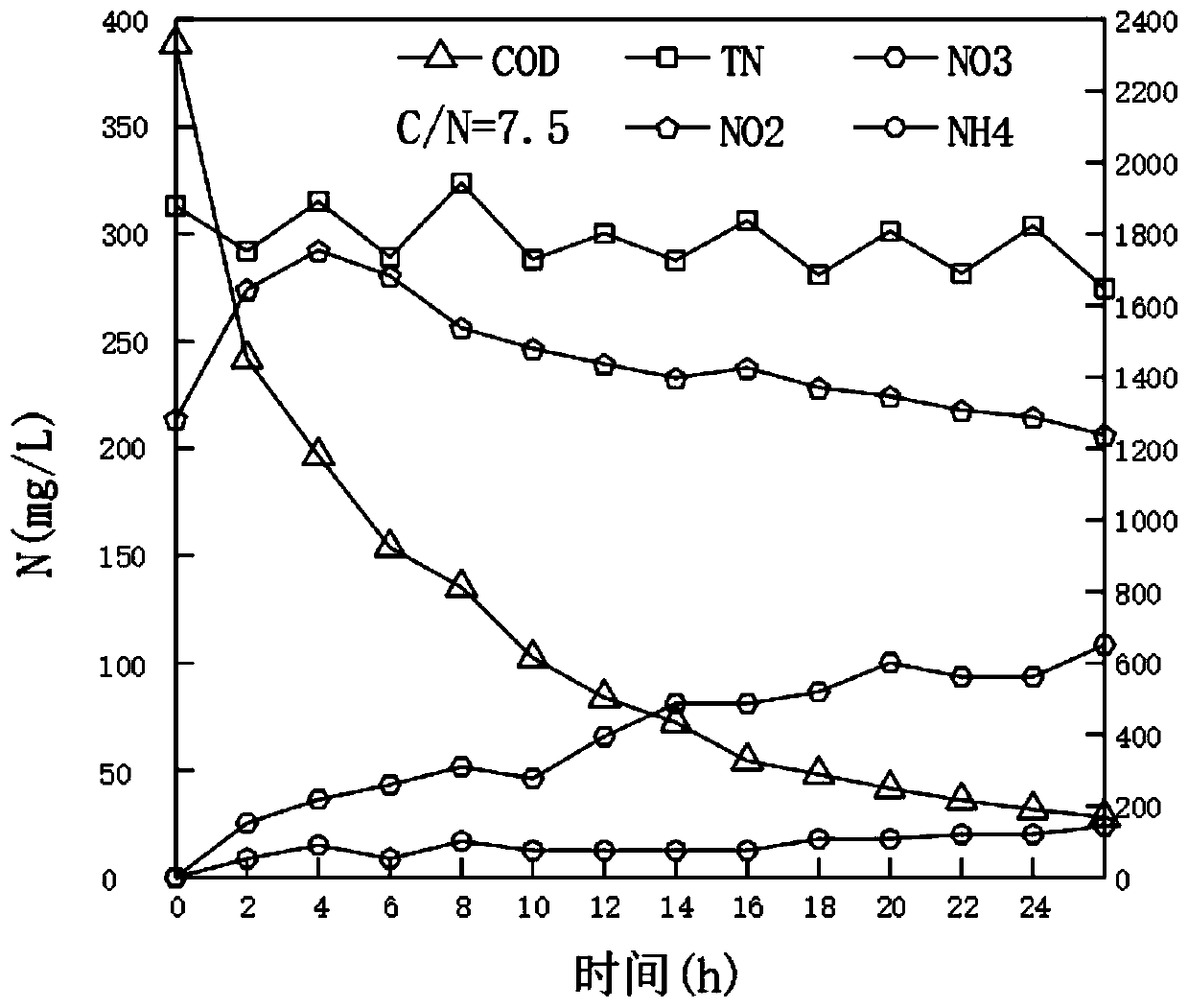Animal husbandry breeding wastewater treatment method and system
A technology for aquaculture wastewater and a treatment method, which is applied in the field of animal husbandry aquaculture wastewater treatment, can solve the problems of poor separation effect, low efficiency of biological treatment of wastewater, etc. Effect
- Summary
- Abstract
- Description
- Claims
- Application Information
AI Technical Summary
Problems solved by technology
Method used
Image
Examples
Embodiment 1
[0025] A treatment method and system for animal husbandry wastewater, comprising the following steps:
[0026] S1. Use the grid to filter the suspended or floating large particles in the aquaculture wastewater, such as residual feed and dung, to avoid blockage of valves and pipes;
[0027] S2. Transfer the breeding wastewater filtered by the grid into the regulating pool, reduce the fluctuation of the wastewater flow in the treatment system, and the average flow rate, prevent the impact of excessive wastewater treatment load on the wastewater treatment facilities in a short period of time, and ensure that the wastewater of each time period of the treatment facility The quantity is relatively stable;
[0028] S3. The aquaculture wastewater in the regulating tank is transported to the capillary solid-liquid separation tank through the pipeline, and the aquaculture wastewater is subjected to solid-liquid separation through the capillary solid-liquid separation tank to improve the...
Embodiment 2
[0037] Embodiment 2: Based on Embodiment 1, the difference is:
[0038] Below is the technological operation status that carries out test according to embodiment 1, and concrete result is with reference to following table 1:
[0039] Table 1 Test operation parameters
[0040]
[0041] Refer to Table 1 above and figure 1 , it can be seen that under aerobic conditions, heterotrophic bacteria grow rapidly, and the nitrification by autotrophic nitrifying bacteria is relatively slow, and autotrophic nitrifying bacteria can only grow rapidly after the oxidation of organic matter is basically completed. The ability of autotrophic nitrifying bacteria to compete for dissolved oxygen is inferior to that of heterotrophic bacteria. Therefore, the nitrification process in the denitrification process requires a large tank volume. figure 1 It can be seen that as the concentration of influent organic matter increases, the inhibition of nitrification rate gradually increases. However, as...
PUM
 Login to View More
Login to View More Abstract
Description
Claims
Application Information
 Login to View More
Login to View More - R&D
- Intellectual Property
- Life Sciences
- Materials
- Tech Scout
- Unparalleled Data Quality
- Higher Quality Content
- 60% Fewer Hallucinations
Browse by: Latest US Patents, China's latest patents, Technical Efficacy Thesaurus, Application Domain, Technology Topic, Popular Technical Reports.
© 2025 PatSnap. All rights reserved.Legal|Privacy policy|Modern Slavery Act Transparency Statement|Sitemap|About US| Contact US: help@patsnap.com



